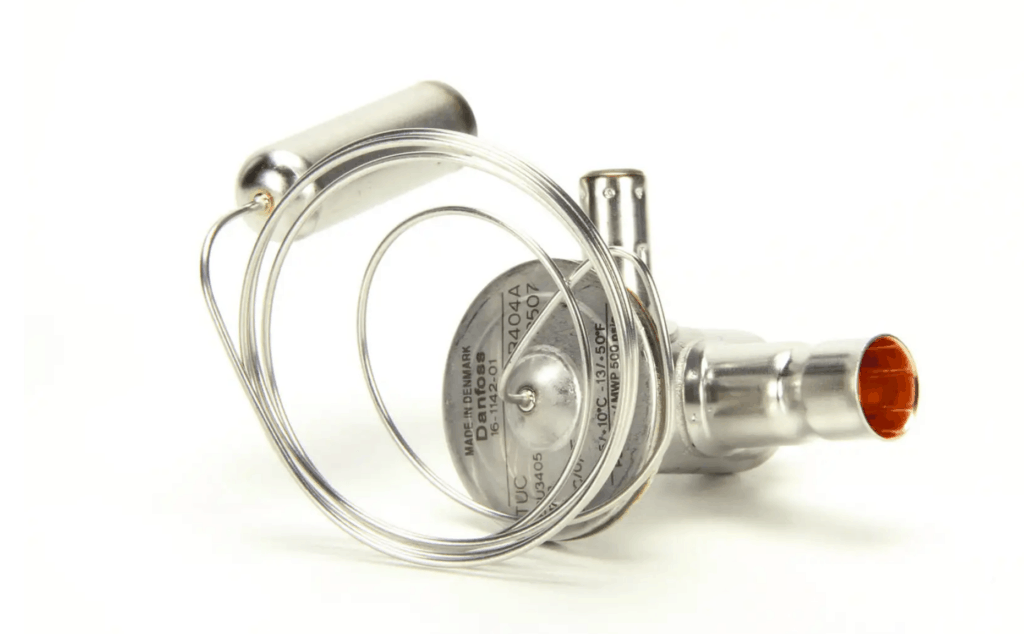When and How to Adjust a Thermostatic Expansion Valve (TXV)
Are you getting complaints about a thermostatic expansion valve (TXV) that isn't working correctly? This is a common issue in various applications. Fortunately, the procedure isn't too difficult. In this guide, we walk technicians through how to adjust a thermostatic expansion valve (TXV) and explain how these parts works and when they need to be adjusted appropriately.
What is the Purpose of a TXV Valve?
The TXV function is to control the superheat limit on the evaporator coil by maintaining the stability of forces between two close forces and one open force such as the equalizer pressure, spring pressure, and the bulb pressure, respectively.
Since the elements, i.e., the clockwise turning of the adjustable bottom valve, low superheat and the higher superheat, all are equal.
When Doesn't a TXV Valve Function Properly?
In case of facing any issue regarding a TXV, firstly, make sure the reasons behind it are not working.
Subcooled Liquid Refrigerant
A thermostatic expansion valve can't work correctly unless it contains the full subcooled liquid refrigerant line. So, make sure to use the subcooled liquid refrigerant before the adjustment of TXV. In case of split expansion, it is recommended to ensure that its condensing unit has proper subcooling and no particular temperature drop. In addition, as there is a screen on some valves, it can also become the reason for this technical adjustment issue.
Pressure Drop Requirement
The particular pressure differential is figured in the functions of the thermostatic expansion valve. This specific pressure differential originated between the evaporator's pressure and the liquid pressure. The temperature of the condensing evaporator usually decreases on cold days that becomes the required differential temperature. This decrease of temperature to the particular differential pressure can also become the cause of improper adjustment.
Bulb Placement Issue
It is the most common and easy access element to adjust the TXV to make sure the bulb's adjustment. The bulb should be allocated at the right place. In addition, it should be fixed and strapped correctly and tightly.
When to Adjust a TXV Valve?
If you are ready to adjust the TXV, you must do some preparation before it.
Firstly, you can see at the evaporator outlet; there will be a superheat right inlet. Technicians must ensure the measurement of this superheat right located at the exact locations as the bulb and the equalizer. It is experienced that in most cases, the systems don't work correctly due to the disturbance of the stability of the superheat.
Well, you can easily find the superheat right inlet on the evaporator. Mainly the superheat is located at 5 to 10 degrees. But if you face any difficulty finding it, check the appliance's spaces in its booklet. It will help you in finding the correct location of the superheat on the evaporator.
The pressure point exists in almost all evaporators. But in case of not finding it, technicians are recommended to see the pressuring readings. You need to be able to realize that pressure point.
Make sure the system is not operating at extreme levels such as very low and very high. If the systems are running on these excessive levels, the adjustment of the TXV can't take place.
Role of Forces
As the bulb performs its working as the open force in the system. So, during the operation, when the bulb becomes hot, the system releases more opening force. But, same like that, when it becomes cold, the system releases less opening force.
As the equalizer works as the closing force, the valve force depends on the power line pressure. At the higher line pressure of the power, it is noticed that the TXV valve is forced closed. The same goes at a low line pressure of the power, and the valve will be forced openly.
The spring of the system performs as the close force. When the tension of the spring is increased, the flow will become higher while the superheat will become lower. In decreasing the tension of the spring, the flow will become lower while the superheat will become higher.
How to Adjust a TXV Valve?

Now you're ready to adjust the TXV. Start by double checking that the system is running correctly and the superheat is well maintained. It's also recommended that the technicians make sure the system is intended to deliver the fully liquid, it has the suitable refrigerant pressure feed, well and subcooled.
Once you have ensured all the above things, you can adjust the thermostatic expansion valve (TXV).
- Step 1. With the help of a wrench and the backing wrench with the adjustable screw, the technicians are challenged to remove the hex cap located on the base of the TXV valve.
- Step 2. To increase the superheat, technicians are allowed to turn it clockwise with the help of a refrigerant wrench.
- Step 3. To decrease the superheat, technicians are allowed to turn it anti-clockwise with the help of a refrigerant wrench.
- Step 4. After making sure to increase or decrease and substituting the panels, it is required to allow the system to run again.
- Step 5. Please go through the superheat and make sure it remains consistent.
- Step 6. Repeat the process until you get assured that the maximum setting has taken place. Precaution: Don't fix the adjustable screw very far since a little bit of force is required to set the fixing.
